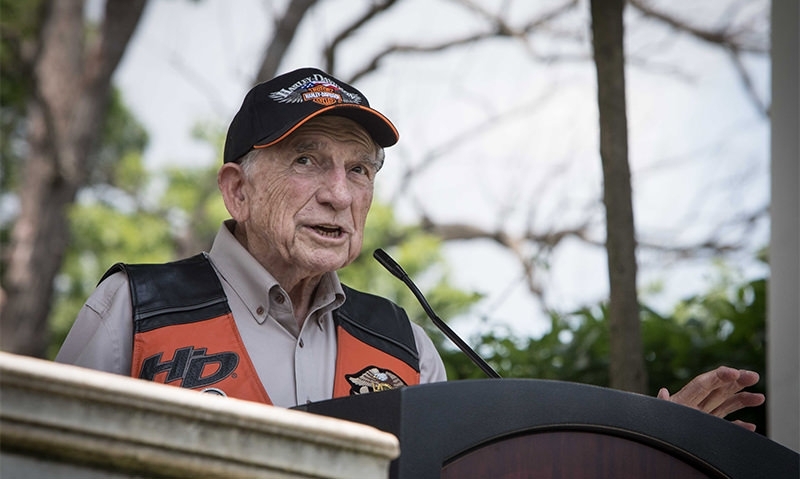
Dr. Bruce Heilman shares his experience of surviving the war and after.
The World War II generation — and the stories these veterans hold — is quickly succumbing to time. Dying at a rate of nearly 400 each day, barely half a million of the 16 million Americans who served in World War II are alive today.
“In five years, we won’t be able to tell our stories. We’ll all be dead," said Dr. Bruce Heilman.
When Heilman talks about World War II, this is the first thing he says — a sharp reminder that time is fast running out to share stories from the greatest generation. His generation is reluctant to talk about the war, something he says is oft attributed to an air of bravado. But, according to Heilman, this isn’t true.
“I’m going to tell you why we never talked about it,” he says.
Heilman’s memories of the war are remarkably vivid. He is just shy of 92 years old and even with more than 70 years between his time in combat and today, he can still hear the screams of the wounded and dying. These sounds and smells, he says, are what haunt him.
“These are not the sounds you associate with war. It’s not the bombs and gunfire. It’s the screams and moans of the wounded and dying, and you don’t know if it’s from your friends or the enemy," Heilman says. “Why would we want our loved ones to know these things? The Gold Star families, their sons, they didn’t just die. They suffered. It’s not something we could come home and share, to put that burden on others.”
Dying on the battlefield is slow, Heilman says. “God created us to withstand a great deal. A fit young man, he does not want to die. His body fights to stay alive.”
Much of Heilman’s platoon fell on Iwo Jima, the five-week battle that would comprise some of the fiercest fighting of the war. Out of 21,000 Marines on Iwo Jima, 7,000 were killed. Another 7,000 were seriously wounded. Heilman says the only reason he didn’t fall along with his Marine brothers was because he was sent to school to be a tail gunner. He would later survive a plane crash on the same island where so many of his friends were killed.
Heilman survived the war and became a lifelong academic who is currently the chancellor of the University of Richmond. He continues to serve as the spokesman for the Greatest Generation Foundation and is an avid motorcycle rider. A longtime member of American Legion Riders — complete with a “God bless Chesty Puller” patch on his vest — he’s ridden over 100,000 miles in memory of Gold Star families.
“We have to tell (their) stories,” Heilman says. “For the ones who died and can’t tell their own.”
- Riders

